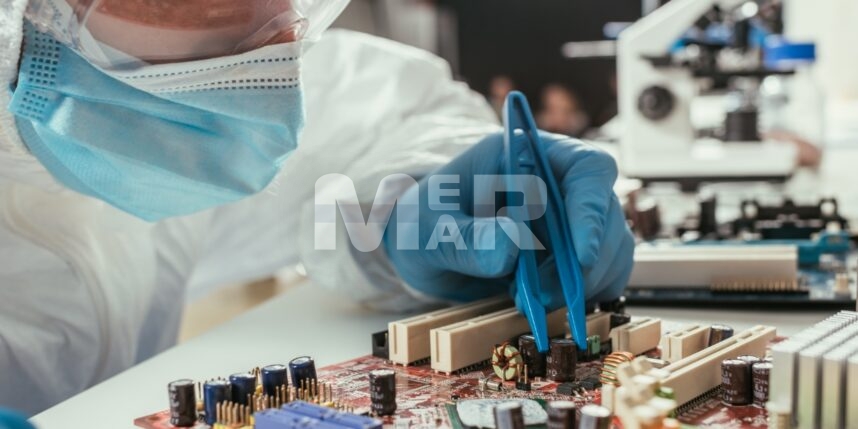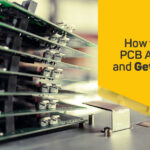Reflow vs Wave Soldering: Process and Difference Between Them

The importance of effective soldering in the success of electronic products cannot be overstated. Broadly speaking soldering refers to a kind of low temperature brazing with the use of a filler material called solder.
It is important however to know the difference between the two types of soldering that are used for PCBs and the relative merits and demerits of both.
Wave Soldering
Simply put, wave soldering is a bulk pcb soldering process, which involves passing the circuit board through molten solder. It derives its name from the fact that there is a pump in the pan that creates a “wave” of solder that attaches the components to the board. This is followed by water spray or air blowing that ensures that the parts are firmly in place.
Wave Soldering Process
Typically Wave Soldering comprises of 4 steps:
1. Flux Spraying
Solder flux plays a very important role as it reduces the surface tension of solder paste as also transmits heat Additionally it is known to stop secondary oxidation.
2. Pre-heating
What is critical in wave soldering is the right temperature as if that is not maintained it can cause mechanical stress resulting in cracks in the board. If the preheating isn’t adequate board strength is greatly compromised. Also, in the absence of the right temperature, the solder thickness is affected which in turn results in board stress.
3. Wave Soldering
This is the stage where the solder paste rises as a wave and allows components to bond on the boards
4. Cooling
Finally, the reduction of temperature results in the board to be successfully assembled. It is through years of experience that the PCB manufacturer arrives at that optimal time and temperature required to arrive that the perfect soldering.
While wave soldering is used in both Through Hole PCB assembly as well as Surface Mount Technology, it is more in use in case of THT.
Reflow Soldering
Reflow Soldering, used largely in Surface Mount Technology involves creating a solder paste out of powdered solder and flux and applying it to fix components on the board. The entire assembly is then heated in a reflow oven to connect the joints. Essentially then the components are first temporarily attached which is then followed by soldering with the solder paste.
Reflow Soldering Process
The Primary steps involved in Reflow Soldering include the following:
1. Pre-Heating
This is critical to the success of soldering as improper heating can lead to soldering quality being significantly compromised.
2. Thermal Soak
Like Wave soldering, solder flux plays a very important role here too. The temperature needs to be right for the flux to be activated and play its role in soldering.
3. Reflow Soldering
This step involves the solder paste to be melted and for it to reflow. Again, temperature control plays a very important role here. Temperature that is too high or too low can adversely affect the process. While temperature that is too low will not allow the solder paste to reflow, if the temperature is too high it can damage the board.
4. Cooling
This process allows the solder paste to solidify and hold the parts firmly in place.
While Reflow soldering can be used in both SMT & THT assembly, it works best in case of SMT. When used in THT, it involves filling solder paste in the holes on the board and plugging component pins followed by reflow soldering.
Reflow vs Wave Soldering
Choosing the right soldering process can go a long way in impacting manufacturing efficiency as well as affecting time, and costs. The possibility of soldering defects can also be significantly cut down if one was to choose the right soldering basis for the technology being used.
As mentioned earlier, typically reflow soldering works best for SMT assembly while Wave soldering works best for THT Assembly. However, there are often situations where the circuit board contains a mix of SMT & THT components. In case of mixed assembly, it is prudent to first carry out SMT followed by THT as the temperature involved in reflow soldering is typically much higher than that in wave soldering. If the order of the two is interchanged, it results in the melting of the solid solder paste resulting in defects.
It is therefore imperative that the PCB Assembly service provider be chosen with utmost care. Long years of experience allow the PCB Manufacturer to be aware of these nuances and deliver a product that stands the test of quality and time. There is little that can substitute the expertise and experience of the PCB Assembler that comes from day-to-day handling as well as keeping oneself updated with the latest technologies.
Get a Free quote for PCB Assembly








